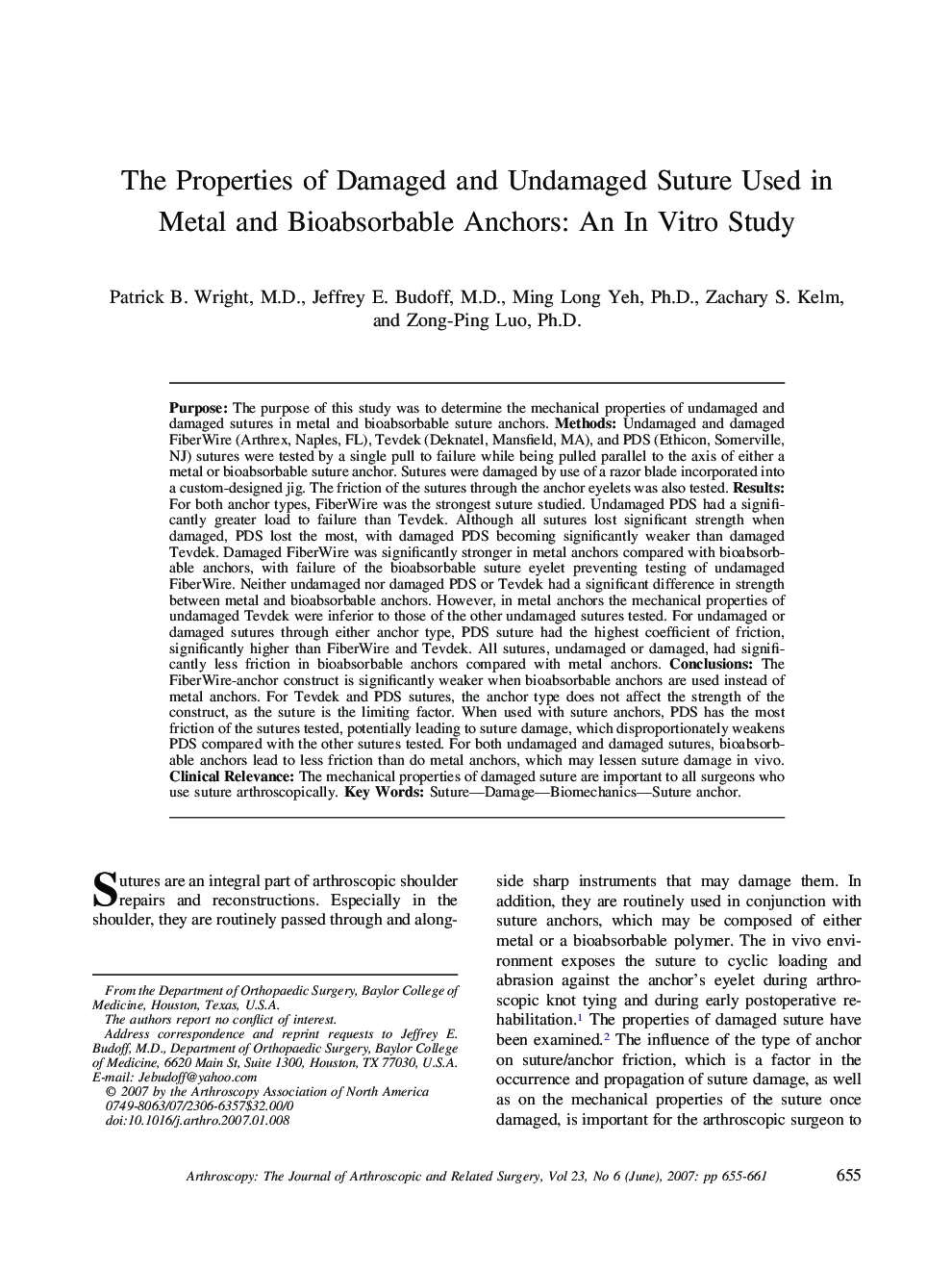| Article ID | Journal | Published Year | Pages | File Type |
|---|---|---|---|---|
| 4046772 | Arthroscopy: The Journal of Arthroscopic & Related Surgery | 2007 | 7 Pages |
Purpose: The purpose of this study was to determine the mechanical properties of undamaged and damaged sutures in metal and bioabsorbable suture anchors. Methods: Undamaged and damaged FiberWire (Arthrex, Naples, FL), Tevdek (Deknatel, Mansfield, MA), and PDS (Ethicon, Somerville, NJ) sutures were tested by a single pull to failure while being pulled parallel to the axis of either a metal or bioabsorbable suture anchor. Sutures were damaged by use of a razor blade incorporated into a custom-designed jig. The friction of the sutures through the anchor eyelets was also tested. Results: For both anchor types, FiberWire was the strongest suture studied. Undamaged PDS had a significantly greater load to failure than Tevdek. Although all sutures lost significant strength when damaged, PDS lost the most, with damaged PDS becoming significantly weaker than damaged Tevdek. Damaged FiberWire was significantly stronger in metal anchors compared with bioabsorbable anchors, with failure of the bioabsorbable suture eyelet preventing testing of undamaged FiberWire. Neither undamaged nor damaged PDS or Tevdek had a significant difference in strength between metal and bioabsorbable anchors. However, in metal anchors the mechanical properties of undamaged Tevdek were inferior to those of the other undamaged sutures tested. For undamaged or damaged sutures through either anchor type, PDS suture had the highest coefficient of friction, significantly higher than FiberWire and Tevdek. All sutures, undamaged or damaged, had significantly less friction in bioabsorbable anchors compared with metal anchors. Conclusions: The FiberWire-anchor construct is significantly weaker when bioabsorbable anchors are used instead of metal anchors. For Tevdek and PDS sutures, the anchor type does not affect the strength of the construct, as the suture is the limiting factor. When used with suture anchors, PDS has the most friction of the sutures tested, potentially leading to suture damage, which disproportionately weakens PDS compared with the other sutures tested. For both undamaged and damaged sutures, bioabsorbable anchors lead to less friction than do metal anchors, which may lessen suture damage in vivo. Clinical Relevance: The mechanical properties of damaged suture are important to all surgeons who use suture arthroscopically.
